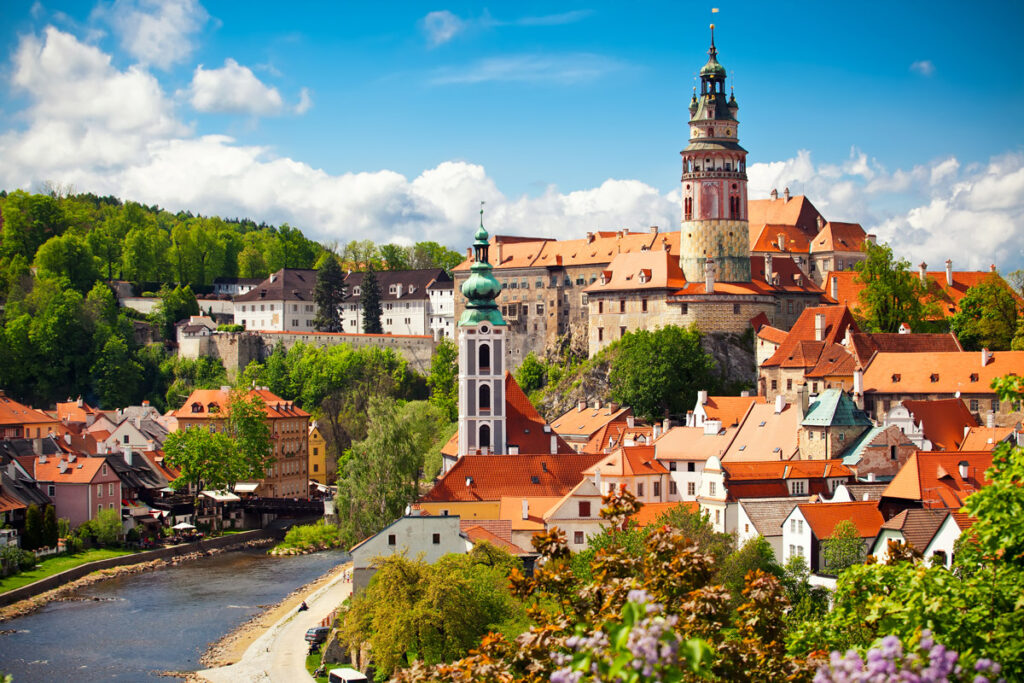Eastern Europe, a region rich in history, culture, and natural beauty, offers an array of captivating cities that are waiting to be explored. From stunning architecture to vibrant cultural scenes, these cities provide a unique and unforgettable travel experience. Here are eight of the best cities in Eastern Europe that should be on every traveler’s list.
1. Prague, Czech Republic
Known as the “City of a Hundred Spires,” Prague is a fairy-tale city with its stunning Gothic and Baroque architecture. The iconic Charles Bridge, Old Town Square with its Astronomical Clock, and the majestic Prague Castle are just a few of the must-see landmarks. Wander through the narrow cobblestone streets, enjoy a boat ride on the Vltava River, and immerse yourself in the city’s rich history and vibrant nightlife.
2. Budapest, Hungary
Budapest, often referred to as the “Paris of the East,” is a city that seamlessly blends old-world charm with modern sophistication. The Danube River splits the city into Buda and Pest, each offering its own unique attractions. Don’t miss the grandeur of Buda Castle, the thermal baths, and the stunning Hungarian Parliament Building. The city’s thermal spas are a perfect way to relax after a day of sightseeing.
3. Kraków, Poland
Kraków is a city where history comes alive, with its well-preserved medieval core and Jewish quarter. The Main Market Square, Rynek Główny, is one of the largest medieval town squares in Europe and is surrounded by beautiful buildings and bustling markets. The Wawel Castle and the nearby Wieliczka Salt Mine are also must-visit sites. Kraków’s rich history, vibrant culture, and delicious cuisine make it an essential stop on any Eastern European itinerary.
4. Dubrovnik, Croatia
Dubrovnik, the “Pearl of the Adriatic,” is a stunning coastal city with well-preserved medieval architecture and a dramatic seafront location. The city’s ancient walls offer spectacular views of the Adriatic Sea and the red-roofed buildings of the Old Town. Stroll down the famous Stradun street, explore the historical forts, and take a cable car ride for panoramic views of the city and the surrounding islands.
5. Tallinn, Estonia
Tallinn, Estonia’s capital, is a charming blend of medieval history and modernity. The UNESCO-listed Old Town is a maze of cobblestone streets, Gothic spires, and medieval houses. Visit the Toompea Castle, Alexander Nevsky Cathedral, and the bustling Town Hall Square. Tallinn also boasts a vibrant arts scene, hip cafes, and a beautiful coastline, making it a diverse and exciting destination.
6. Riga, Latvia
Riga, the capital of Latvia, is known for its Art Nouveau architecture and vibrant cultural scene. The historic center, a UNESCO World Heritage Site, features stunning buildings, lively squares, and cozy cafes. Explore the Central Market, housed in old Zeppelin hangars, and visit the Riga Cathedral and the Freedom Monument. The city’s mix of tradition and modernity creates a unique atmosphere that captivates visitors.
7. Bucharest, Romania
Bucharest, Romania’s bustling capital, is a city of contrasts, where grandiose buildings from the communist era stand alongside beautiful Belle Époque architecture. The colossal Palace of the Parliament, one of the largest buildings in the world, is a must-see. Wander through the historic Lipscani district, visit the beautiful Herastrau Park, and explore the city’s many museums and galleries.
8. Sofia, Bulgaria
Sofia, Bulgaria’s capital, is an ancient city with a rich history dating back to Roman times. The city’s landmarks include the stunning Alexander Nevsky Cathedral, the Roman-era Church of St. George, and the Boyana Church, a UNESCO World Heritage Site. Sofia’s vibrant cultural scene, numerous parks, and scenic mountain backdrop make it a delightful destination for travelers.
Conclusion
Eastern Europe offers a treasure trove of cities, each with its own unique charm and character. Whether you’re drawn to the architectural wonders of Prague, the thermal baths of Budapest, or the coastal beauty of Dubrovnik, these cities provide a rich tapestry of experiences that will leave you enchanted. So pack your bags and get ready to explore the hidden gems of Eastern Europe – you won’t be disappointed.
FAQ: Traveling to Eastern European Cities
1. What is the best time to visit Eastern European cities?
The best time to visit Eastern European cities is during the late spring (May to June) and early autumn (September to October). During these periods, the weather is generally pleasant, and tourist crowds are smaller compared to the peak summer months. However, winter visits can also be magical, especially for those who enjoy festive Christmas markets and snowy landscapes.
2. Do I need a visa to travel to Eastern European countries?
Visa requirements vary depending on your nationality and the specific country you are visiting. Citizens of the European Union, the United States, Canada, Australia, and many other countries can travel to most Eastern European countries visa-free for short stays. It’s essential to check the specific visa requirements for each country you plan to visit and ensure your passport is valid for at least six months beyond your intended stay.
3. What is the currency used in Eastern European cities?
Eastern Europe comprises many countries, each with its own currency. For example, the Czech Republic uses the Czech koruna (CZK), Hungary uses the Hungarian forint (HUF), and Poland uses the Polish złoty (PLN). However, some countries, like Estonia, Latvia, and Slovakia, use the euro (EUR). It’s advisable to carry some local currency for small purchases, though credit cards are widely accepted in most urban areas.
4. Is it safe to travel to Eastern European cities?
Yes, Eastern European cities are generally safe for travelers. However, as with any travel destination, it’s essential to remain vigilant and take standard precautions to protect yourself and your belongings. Be aware of your surroundings, avoid poorly lit areas at night, and keep an eye on your personal items, especially in crowded tourist areas.
5. What languages are spoken in Eastern European cities?
Eastern Europe is linguistically diverse. While each country has its official language (e.g., Polish in Poland, Czech in the Czech Republic, Hungarian in Hungary), English is widely spoken in major cities, particularly among younger people and those working in the tourism industry. Learning a few basic phrases in the local language can enhance your travel experience and is often appreciated by locals.
6. What are some must-try foods in Eastern European cities?
Eastern Europe offers a rich culinary landscape with hearty and flavorful dishes. In Prague, try svíčková (marinated beef with creamy sauce). In Budapest, don’t miss goulash (a spicy meat stew). In Kraków, enjoy pierogi (dumplings with various fillings). Other regional specialties include Croatian seafood, Estonian rye bread, and Romanian sarmale (cabbage rolls). Be sure to explore local markets and eateries for authentic culinary experiences.
7. How do I get around in Eastern European cities?
Eastern European cities typically have well-developed public transportation systems, including buses, trams, and metros. Purchasing a city transport pass can be economical and convenient for unlimited travel within a specified period. Taxis and ride-sharing services are also available, but it’s advisable to use reputable companies or apps to avoid overcharging. Walking and cycling are excellent options for exploring city centers.
8. What cultural etiquette should I be aware of when visiting Eastern European cities?
Cultural etiquette varies by country, but some general tips include greeting people with a handshake, being punctual for appointments, and dressing modestly when visiting religious sites. It’s also customary to remove your shoes when entering someone’s home. Learning a few basic customs and showing respect for local traditions can enhance your interactions with locals.
9. Are Eastern European cities suitable for budget travel?
Yes, Eastern European cities are often more affordable than their Western European counterparts. Accommodation, dining, and transportation costs are generally lower, making it an attractive destination for budget travelers. Hostels, budget hotels, and vacation rentals offer a range of affordable lodging options. Street food, local markets, and casual eateries provide delicious and inexpensive dining choices.
10. What are some unique souvenirs to bring back from Eastern European cities?
Eastern Europe offers a variety of unique souvenirs. In Prague, consider buying Bohemian crystal or garnet jewelry. In Budapest, Hungarian paprika and handmade lace make great gifts. Polish amber, Croatian lavender products, and Estonian handicrafts are also popular. Visiting local markets and artisan shops is a fantastic way to find unique, locally-made items to remember your trip by.








